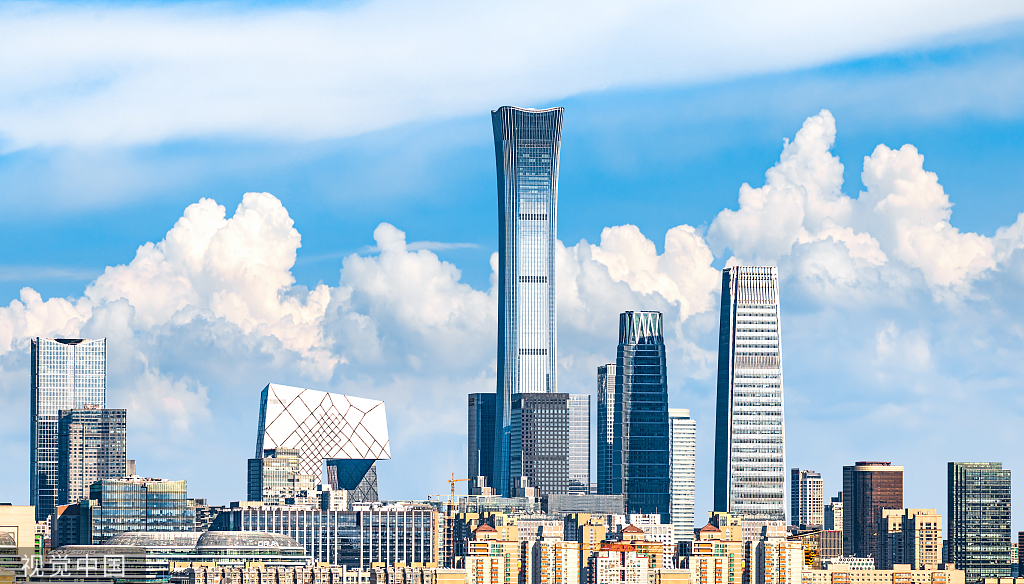China's economy has been going through a tumultuous time so far in 2022. GDP growth in the first three quarters was only 3 percent. After growing 2.5 percent in the first two quarters, growth rebounded to 3.9 percent in Q3. Many expect further acceleration in Q4, leading to a 4 percent to 4.5 percent growth for the entire year. This volatility in growth is attributable to external, as well as internal factors. External factors include the Ukraine crisis, the COVID-19 pandemic, disruptions in supplies of key commodities, energy and manufactured products, inflation in Western countries and compulsions of local politics in some regions. All these have contributed to the fluctuations in GDP growth. Internal factors contributing to the volatility in economic growth include the rigid prevention and control measures in some regions, the problems facing the real estate sector and weakened consumption. Although most of these factors will continue to impact China and the world, several developments seem to indicate some possible changes. The 20th Congress of the Communist Party of China formalized continuity in its leadership. The Party announced "Chinese path to modernization" as the guiding framework for China's development going forward. The core of this framework comprises notions of high-quality growth, inclusiveness, tech innovation and continued opening-up to the rest of the world. At the G20 and APEC meetings, President Xi Jinping underscored the criticality of multilateralism, collaboration, inclusiveness, innovation, peaceful co-existence and a shared future for the world. President Xi had one-to-one meetings with several leaders, including US President Joe Biden, giving rise to cautious hopes of improvement in the relations between China and the West. Domestic politics in the US and Europe is undergoing some drastic changes. The mid-term elections in the US have redrawn the political landscape of the country somewhat. Although Republicans and Democrats both have similar views on China, the new dynamic between the House and the Senate may create some more checks-and-balances for the US' foreign policy. Attitudes toward China are shifting in a number of European countries too. Fiscal policies around the world remain a key factor going forward as many central banks are expecting a recession. Inflation seems to be slowing down in the US but it is likely to remain high next year. The speed and magnitude of the Fed's rate hikes may slow next year. Inflation is likely to remain high in Europe too, unless something dramatic happens, such as a cease-fire in Ukraine. China has followed proactive fiscal and prudent monetary policies so far and therefore, inflation has been modest relative to many Western countries. Going forward, China will likely put more emphasis on stimulating consumption while continuing to invest in infrastructure, both physical and digital. The property sector may take some time to sort out but the worst seems over and things may start trending upward now. What is the outlook for China's economy in 2023? If we take out the extreme cases on both ends of the spectrum, I'd suggest we arrive at two probable scenarios. In the more conservative scenario, the Russia-Ukraine conflict continues and the West's antagonism toward China leads to some decoupling. Inflation in the West remains an issue, perhaps resulting in recession. Not the least, the collapse of the crypto exchange FTX has a wide domino effect. In China, consumption stagnates and the property sector continues to face grave challenges. Under this scenario, China's GDP growth would probably be less than 5 percent next year. Perhaps around 4.5 percent or so. It could be even lower if some drastically negative event (s) take place. A more positive scenario on the other hand would see gradual relaxation in the prevention and control measures and continued opening-up of the Chinese economy to the rest of the world. The Russia-Ukraine military conflict will come to end. Stock markets in general will do well. Inflation in the West will come down, though not entirely. In China, the dual circulation paradigm will function well. Consumption will increase and the property sector will have a smooth landing. In this scenario, China's GDP growth next year will likely exceed 5 percent. Perhaps by 50 basis points or even more. Judging by the global and local dynamics and with reasonable expectations going forward, I believe there is more than a 50 percent chance of the positive scenario materializing. I expect continued opening-up of China to the rest of the world and as such more foreign companies and capital finding their way to China.
Two outlooks for 2023. Will it be heads or tails?
Editor:谭婕倪
Source:Chinadaily.com
Updated:2022-12-05 16:52:46
Source:Chinadaily.com
Updated:2022-12-05 16:52:46
Special
Contact
Welcome to English Channel! Any suggestion, welcome.Tel:0731-82965627
lisl@rednet.cn
zhouqian@rednet.cn











